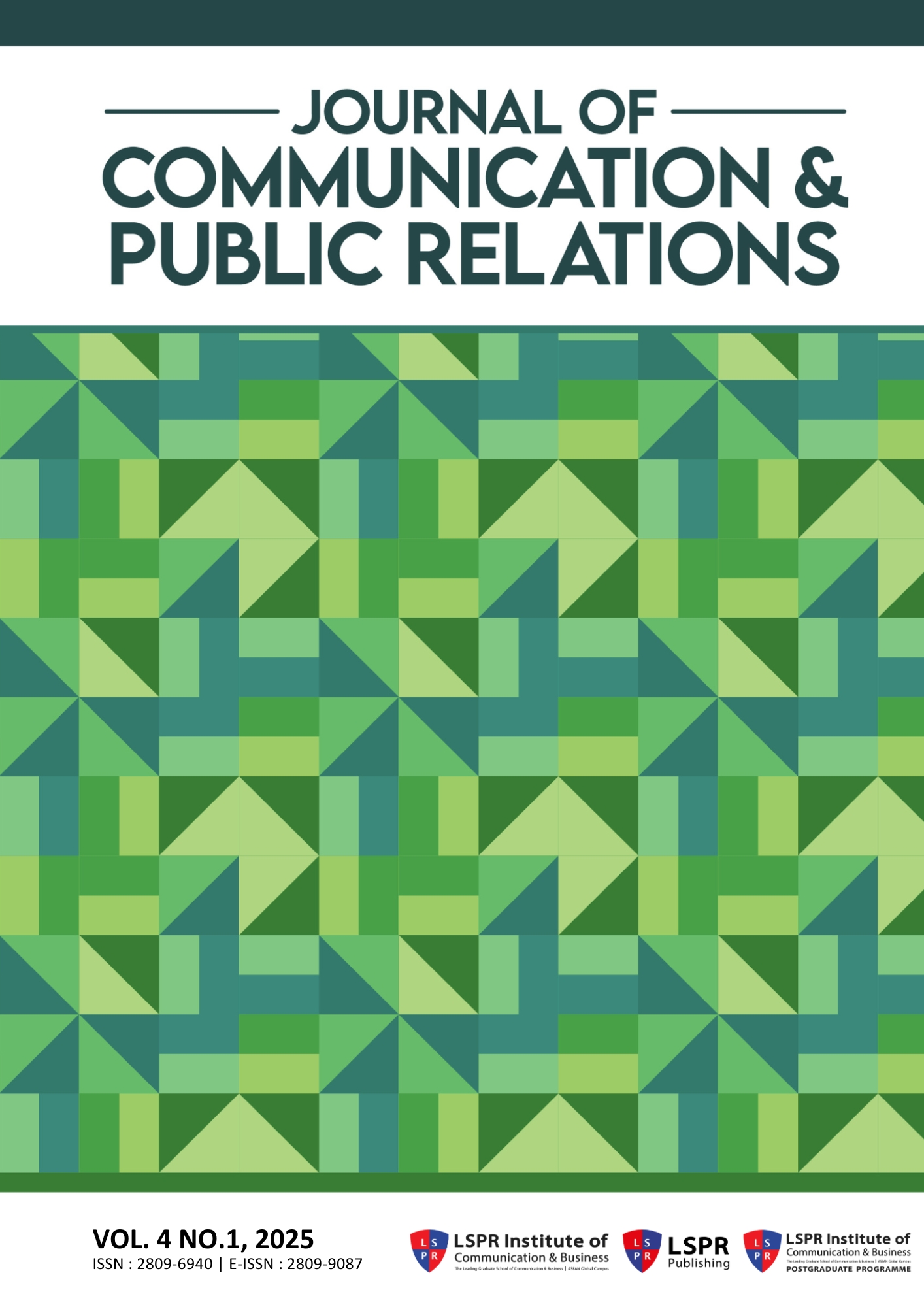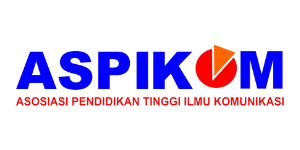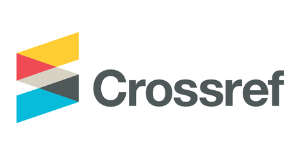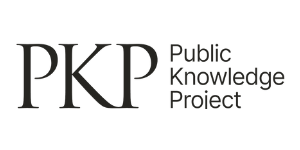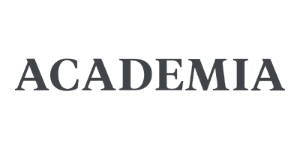Benin Publics' Perception of Media Framing of Gender Equality for National Development in Nigeria
DOI:
https://doi.org/10.37535/105004120253Keywords:
bias and fairness, gender advocacy, media influence, media representation, social mediaAbstract
This study examines the Benin public's perceptions of media framing gender equality in Nigeria and its impact on national development. The study's rationale was to ascertain how media framing practices shape public attitudes and influence policy responses, ultimately affecting the overall advancement of gender equality in Nigeria. Anchored on framing theory, the study employed the survey research design and collected data using a structured questionnaire from 384 respondents in Benin City using the multistage sampling technique. The data were presented in tables and analyzed using frequency counts, straightforward percentages, and mean scores. Findings revealed that the media create awareness of gender equality among the Benin public to a great extent, with social media identified as the most effective platform. Also, the standard frames employed by the media on gender equality issues are social justice and political empowerment frames. However, despite recognizing the media’s effectiveness, concerns about bias and fairness persist. The researchers conclude that while media plays a significant role in raising awareness, there is considerable skepticism regarding the accuracy and bias of these portrayals. Recommendations include efforts that should be made to increase the frequency and consistency of gender equality content across all media platforms, including traditional and digital media, among others.
References
Adewunmi, O. E., & Aleshinloye, O. S. (2024). Media Framing of Women’s Issues on Television Continental (TVC)’S Your View and Its Influence n Public Perception In Nigeria. International Journal of Research and Innovation in Social Science (IJRISS), 8(3), 28-36. https://doi.org/10.47772/IJRISS.2024.803197
Ahmed, R. (2025, January 2). Media Framing & Elections : Analyzing the Print Media Framing & Its Impacts during 2018 Elections in Pakistan. HAL : Open Science. https://theses.hal.science/tel-04861145v1/file/2021LILUH067.pdf
Akinlami, F. (2024). Media and Gender Identities in Nigeria. International Journal of Humanities Social Sciences and Education (IJHSSE), 11(7), 30-37. https://doi.org/10.20431/2349-0381.1107004
Aladi, J. A., & Okoro, N. (2021). Media Representation of Nigerian Women in the News: Evidence from Selected Newspapers. Journal of International Women's Studies, 22(5), 437-452. https://vc.bridgew.edu/jiws/vol22/iss5/27
Asemah, E. S., Gujbawu, M., Ekhareafo, D. O., & Okpanachi, R. A. (2022). Research methods and procedures in mass communication (3rd ed.). Jos: Great Future Press. ISBN: 978-076-403-8
Atar, Ö. G. (2020). Social Gender Representation in the Context of the Representation Problem in the Media. In Advances in Media, Entertainment and the Arts (AMEA) Book Series. https://doi.org/10.4018/978-1-7998-0128-3.ch002
Calviño, N., Georgieva, K., & Renaud-Basso, O. (2024, March 8). The economic power of gender equality. European Investment Bank. https://www.eib.org/en/stories/gender-equality-power
Çerçi, Ümmü Özlem. (2024). A “Notification” on The Use of Social Media as A Means of Community Resilience in Crisis Management. Journal of Communication and Public Relations, 3(2), 1–18. https://doi.org/10.37535/105003220241
Connell, R. W. (2005). Masculinities (2nd ed.). California: University of California Press. ISBN 0520246985, 9780520246980
Endong, F. P. C., & Obonganwan, E. E. (2015). Media (mis)representation of the Nigerian Woman as a Product of the Society. International Journal of Gender and Women’s Studies, 3(1), 101-106. https://doi.org/10.15640/ijgws.v3n1p10
Entman, R. M. (1993). Framing: Toward Clarification of a Fractured Paradigm. Journal of Communication, 43(4), 51-58. https://doi.org/10.1111/j.1460-2466.1993.tb01304.x.
Fab-Ukozor, N. (2019). Influence of Journalist Knowledge about Gender Mainstreaming Ideology on the Reporting of Gender Issues. Advances in Applied Sociology, 9(7), 269-287. https://doi.org/10.4236/aasoci.2019.97021
Goffman, E. (1959). The presentation of self in everyday life. New York: Doubleday. ISBN 0385094027, 9780385094023
Guanah, J. S. (2023). Perceptions of Media and Gender Representation in a Multicultural Society. In Communication, Media and Power Relations in a Multicultural Society: Context, Issues and Perspectives for Development (pp. 118–135). ACSPN Book Series. Evans Brothers. ISBN: 978-978-798-550-1
Hedegaard, J. (2020, February 27). The Crucial Role of Media in Achieving Gender Equality. International Media Support. https://www.mediasupport.org/the-crucial-role-of-media-in-achieving-gender-equality/
Ihechu, I. P., & Nwabuisi, P. O. (2021). Perception of the Portrayal of Women in Television Advertising amongst Umuahia Residents of Abia State, Nigeria. British Journal of Mass Communication and Media Research, 1(1), 1–15. https://doi.org/10.52589/BJMCMRVAGRXQZR
Ihechu, I. P., Afulike, D. C., & Ndukwe, U. E. (2023). Cultural Practices against Women in Nigeria: The Media Frames and the Challenges. International Journal of Current Science Research and Review, 6(4). https://doi.org/10.47191/ijcsrr/v6-i4-13
Iyengar, S. (1991). Is anyone responsible? How television frames political issues. Chicago, IL: University of Chicago Press. ISBN-10. 0226388557 ; ISBN-13. 978-0226388557
Kattan, R. B., Khan, M. M., & Merchant, M. (2023, October). Achieving Gender Equality in Education: Examining Progress and Constraints. World Bank Group. https://documents1.worldbank.org/curated/en/099503011032311205/pdf/IDU09e9110ff0456004aed
Khan, A., & Tidman, M. M. (2023). Gender Inequality in Developing Countries: A Multifactorial Review. Journal of Social and Political Sciences, 6(1), 151–162. https://doi.org/10.31014/aior.1991.06.01.402
Kiram, M. Z. (2024). Interrogating Masculinity, Gender Performance, and Power Dynamics in Indonesian Society through Taylor Swift’s ‘The man’. Gender Equality: International Journal of Child and Gender Studies, 10(2), 209. https://doi.org/10.22373/equality.v10i2.25877
Krijnen, T., & Van Bauwel, S. (2021). Gender and media: Representing, producing, consuming (2nd Ed.). London: Routledge. ISBN 9780367332099
Liao, C. (2023). Exploring the Influence of Public Perception of Mass Media Usage and Attitudes towards Mass Media News on Altruistic Behavior. Behavioral Sciences, 13(8), 621. https://doi.org/10.3390/bs13080621
Mendes, K., Ringrose, J. & Keller, J. (2019). Digital Feminist Activism: Girls and Women Fight Back Against Rape Culture (Oxford Studies in Digital Politics). London: Routledge. ISBN-10 0190697857; ISBN-13 978-0190697853
Ndinojuo, B.-C. E. (2020). Journalistic Representation of Women in the Reportage of Military Operations against Boko Haram in Northeast Nigeria. Contratexto, 35, 155–179. https://doi.org/10.26439/contratexto2021.n035.4826
Ogwezzy-Ndisika, A. O., Faustino, B. A., Amakoh, K. O., Adesile, T. A., Ejiwunmi, S., & Oloruntoba, F. A. (2023). Gender Representation in Nigerian Media Contents and Social Reality. 145–169. https://doi.org/10.1007/978-3-031-35060-36
Omonua, L. A., Akpor, E. D., & Olley, W. O. (2023). Mass Media Coverage of Women and Gender Inequality. African Journal of Social Sciences and Humanities Research, 6(4), 150–165. https://doi.org/10.52589/ajsshr-fdl6snq3
Onwumechili, C. (2021). Media Framing of Women’s Football in Nigeria from the Early Twentieth Century toPpresent. The International Journal of the History of Sport, 38(12), 1249–1268. https://doi.org/10.1080/09523367.2021.1993190
Remitasari, A. ., & Fenton, A. J. (2024). Public Perception on The Implementation of Tax Amnesty Program. Journal of Communication and Public Relations, 1(1), 16–31. Retrieved from https://journal.lspr.edu/index.php/jcpr/article/view/361
Santoniccolo, F., Trombetta, T., Paradiso, M. N., & Rollè, L. (2023). Gender and Media Representations: A Review of the Literature on Gender Stereotypes, Objectification and Sexualization. International Journal of Environmental Research and Public Health, 20(10), 57–70. https://doi.org/10.3390/ijerph20105770
Sainz-De-Baranda, C., Adá-Lameiras, A., & Blanco-Ruiz, M. (2020). Gender Differences in Sports News Coverage on Twitter. International Journal of Environmental Research and Public Health, 17, 5199. https://doi.org/10.3390/ijerph20105770.
Song, Q. (2024). Framing in Media and Communication Studies: A Bibliometric Analysis. Insight - News Media, 7(1), 674. https://doi.org/10.18282/inm674
Sudha, T., & Reshi, I. A. (2023). Unleashing the Power: Empowering Women for A Stronger Economy. International Journal of Educational Review, Law And Social Sciences |IJERLAS, 3(3), 826-833. https://radjapublika.com/index.php/IJERLAS/article/download/818/727
UNICEF. (2022). Gender Equality in Education: A Global Report. UNICEF. https://www.unicef.org/reports/gender-equality-education-global-report
United Nations. (2021). Progress towards the Sustainable Development Goals: Gender equality. United Nations. https://www.un.org/sustainabledevelopment/gender-equality/.
World Bank. (2022). Gender Equality and Development. World Bank. https://www.worldbank.org/en/publication/gender-equality-and-development.
World Economic Forum. (2023). Global Gender Gap Report 2023. World Economic Forum. https://www.weforum.org/reports/global-gender-gap-report-2023.

